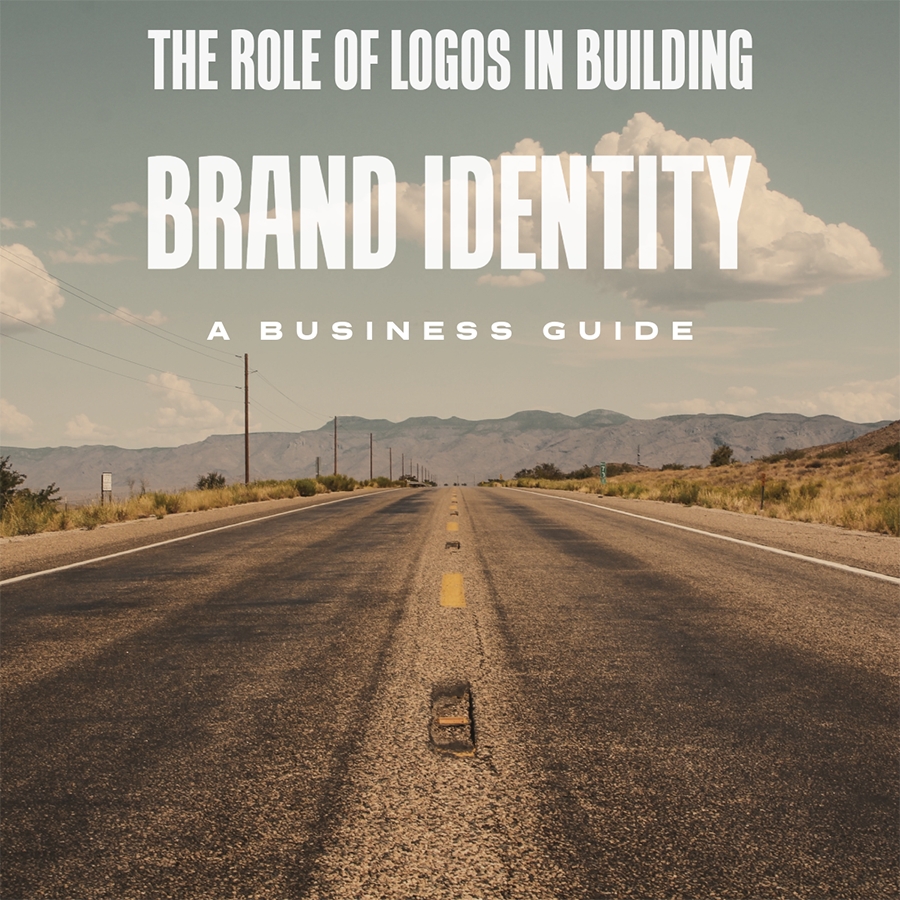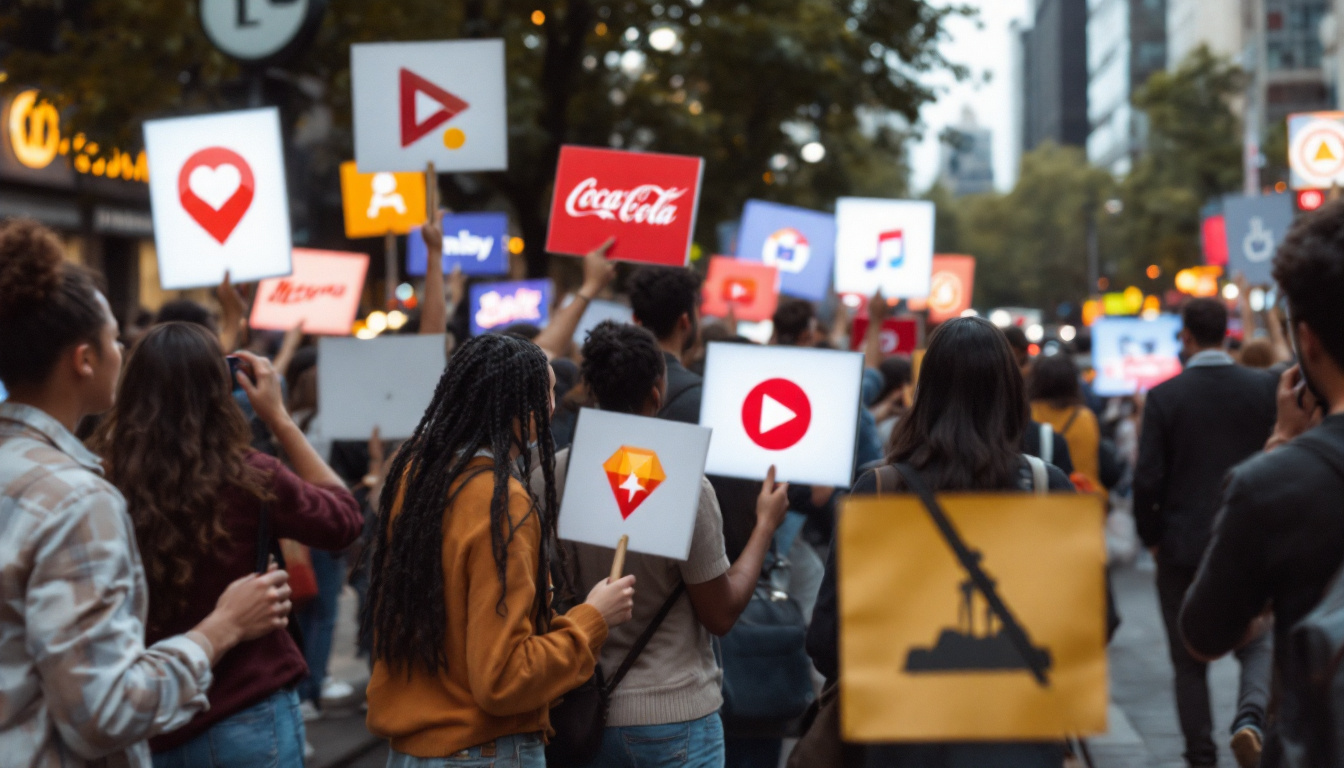The Benefits of Uniforms in Hospitality
The Benefits of Uniforms in Hospitality: Elevating Standards and Enhancing Service
In the fast-paced world of hospitality, first impressions matter more than ever. Whether it's a guest walking into a five-star hotel, a family dining out at a favorite restaurant, or a traveler checking in at an airport lounge, the appearance and professionalism of the staff play a crucial role in shaping the overall experience. One key aspect that significantly contributes to this is the use of uniforms. Uniforms in the hospitality industry are not just about looking the part; they offer a wide range of benefits that can enhance both the customer experience and the work environment for employees.
Professionalism and Brand Identity
Uniforms serve as a powerful tool for establishing a professional atmosphere and reinforcing brand identity. When staff members wear well-designed uniforms, they project a cohesive image that aligns with the brand's values and aesthetics. This consistency helps build trust and reliability with customers, who often associate the quality of service with the appearance of the staff. A well-dressed team reflects the company's commitment to excellence, making guests feel confident that they will receive high-quality service. Moreover, uniforms can be customized with logos, colors, and designs that reinforce the brand's image, making them a subtle yet effective marketing tool.
Hygiene and Safety Standards
In an industry where cleanliness and hygiene are paramount, uniforms play a critical role in maintaining high standards. Unlike casual clothing, which can vary widely in terms of cleanliness and appropriateness, uniforms are typically made from durable, easy-to-clean materials that are designed to withstand the demands of the job. This not only ensures that staff members look neat and presentable throughout their shift but also reduces the risk of contamination, especially in environments like kitchens or food service areas. Wearing casual clothing to work, on the other hand, can lead to a less polished appearance and may even give the impression that the staff is less concerned about hygiene. Stains, wrinkles, or mismatched outfits can make employees appear unkempt, which can negatively impact the customer's perception of the establishment.
Fostering Team Unity and Employee Morale
Uniforms do more than just enhance the external image of a business; they also contribute to a sense of unity and pride among employees. When everyone wears the same uniform, it eliminates the pressure to compete with colleagues over fashion choices and creates an inclusive environment where all staff members are seen as equals. This sense of belonging can boost employee morale and foster a team-oriented culture, which is essential in the hospitality industry where collaboration is key to delivering exceptional service. Additionally, uniforms can simplify the daily routine for employees, allowing them to focus more on their job and less on deciding what to wear each day.
In conclusion, uniforms are an indispensable part of the hospitality industry, offering a myriad of benefits that go beyond mere appearance. They ensure that staff members present themselves professionally, uphold hygiene standards, and foster a strong sense of team unity. Conversely, allowing casual clothing in the workplace can lead to inconsistencies in appearance, potential hygiene concerns, and a less professional image overall. By investing in quality uniforms, hospitality businesses can not only enhance their brand identity but also create a positive and cohesive environment for both employees and guests.
Franchise and Multi-Location Businesses with an Automated Uniform Ordering Solution
Franchise and Multi-Location Businesses with an Automated Uniform Ordering Solution.
Are uniforms necessary?
Are Uniforms Necessary?
The debate over whether uniforms are truly “necessary” for a business has persisted for decades. Some argue they are merely an added expense or an unnecessary imposition on employees. But in reality, uniforms are not just a necessity—they are vital to your business and the brand it represents. This article explores why uniforms matter more than you might think, going beyond the surface-level perception of necessity.
Uniforms: A Matter of Perception, Not Just Necessity
Strictly speaking, no business has to use uniforms. It’s entirely possible to run a company without ever investing in branded attire. Employees can wear whatever they choose, and as long as they adhere to some basic dress codes, there’s no immediate problem. Yet, choosing not to have uniforms is a missed opportunity to enhance your business image, reinforce your brand, and create a unified company culture.
When you view uniforms through this lens, it becomes clear that they’re not just "necessary" in the functional sense—they’re vital for any business that aims to establish a strong presence, professional appeal, and cohesive team identity.
The Power of First Impressions
In the world of business, first impressions are everything. A uniform is more than just an article of clothing—it’s a visual representation of your company’s identity. When customers walk into a store or office and see staff wearing professional, branded uniforms, it immediately sets a tone of credibility and trust.
Uniforms contribute to the overall aesthetics and professionalism of the work environment, making employees look approachable and competent. Without uniforms, it’s harder to control that first impression. The look and feel of your team are left to chance, which can lead to inconsistency and a diluted brand presence.
Building a Cohesive Brand Identity
Brand identity isn’t just about a logo or a catchy tagline; it’s about every interaction and touchpoint a customer has with your business. Uniforms are an integral part of that brand identity. They not only reinforce your brand’s colors, design, and message but also act as a mobile advertisement, ensuring that your company’s presence is felt in every interaction.
When employees wear uniforms, they become walking extensions of the brand. Whether they’re at the office, out on a service call, or grabbing lunch nearby, their attire tells the world who they are and what company they represent. That level of brand reinforcement is invaluable, helping your business stay top-of-mind with existing customers and make an impression on potential new ones.
Enhancing Team Spirit and Morale
A less talked-about, yet equally important, aspect of uniforms is their impact on team spirit and employee morale. Uniforms create a sense of unity and belonging. They blur the lines between hierarchical positions, emphasizing that everyone is working toward the same goals. Employees feel a part of something bigger than themselves, fostering a sense of pride in their work and the organization.
This unity is vital in customer-facing roles where teamwork and cooperation are essential for success. It helps boost motivation and collaboration, driving better service and performance.
Uniforms as a Competitive Advantage
In competitive industries, standing out is crucial. Uniforms can provide that edge. They offer an immediate way to differentiate your company from competitors who might not prioritize brand representation or employee appearance. The consistency and professionalism that uniforms bring can be a subtle, yet powerful, factor in a customer’s decision-making process.
Think of uniforms as a way to communicate, without words, that your company is serious, reliable, and values quality in everything it does. This can be particularly advantageous in industries like hospitality, healthcare, retail, and corporate services, where trust and professionalism are critical.
More Than Just Clothing—An Investment
When considering whether uniforms are “necessary,” it’s easy to get caught up in the logistics and costs. But in truth, they are much more than a standard expense—they’re an investment in your brand, your team, and your business’s overall perception. The benefits they offer in terms of brand reinforcement, team morale, and competitive advantage far outweigh the costs.
In conclusion, while uniforms may not be necessary in the strictest sense, they are undoubtedly vital to your business and the brand it represents. They go beyond mere practicality and become an essential tool for creating a strong, recognizable brand presence, fostering team spirit, and building a professional image that resonates with customers and employees alike. So, if you’re still wondering whether uniforms are necessary, consider the bigger picture. They’re not just clothes—they’re a symbol of what your company stands for.
The Uniform Super Store, making your brand personal.
The Role of Logos in Building Brand Identity
Explore how logos serve as powerful tools in establishing and enhancing brand identity.
The Role of Logos in Building Brand Identity
Logos play a crucial role in the world of branding. They serve as visual representations of a company, encapsulating its values, mission, and story in a single, symbolic graphic. This article delves into the multifaceted relationship between logos and brand identity, exploring how effective logo design can enhance a company’s presence in the marketplace and foster deep connections with its audience.
Understanding the Concept of Brand Identity
Brand identity encompasses the visual elements of a brand, including its logo, typography, colors, and overall design, and extends to its tone of voice and the values it represents. It is the culmination of how a brand communicates with the world, forming a cohesive image that influences perception and engagement.
Defining Brand Identity
At its core, brand identity is a combination of all aspects that make up a brand's personality. It is what distinguishes one brand from another in a crowded marketplace. A well-defined brand identity not only captures the essence of a brand but also resonates with its target audience, encouraging loyalty and recognition.
This identity is often crafted through a combination of design elements, messaging strategies, and customer interactions. Every touchpoint contributes to how consumers perceive and connect with a brand, making it essential for companies to curate their identity meticulously. For instance, a brand's website, social media presence, and even customer service interactions are all opportunities to reinforce its identity. This holistic approach ensures that every aspect of the brand experience aligns with the overall message and values the brand wishes to convey.
Importance of a Strong Brand Identity
A strong brand identity fosters trust and credibility, allowing consumers to feel more confident in their choices. It provides a sense of stability and consistency, which is crucial in today's rapidly changing market. Moreover, a compelling brand identity can significantly enhance customer loyalty, driving long-term business success.
In a saturated market, where choices abound, a unique brand identity helps differentiate a business from its competitors. This differentiation becomes even more powerful when combined with a thoughtfully designed logo, acting as a memorable symbol representing the brand’s mission and values. Furthermore, a strong brand identity can also facilitate emotional connections with consumers. When a brand successfully communicates its story and values, it can evoke feelings of nostalgia, aspiration, or even community, making customers more likely to advocate for the brand and share their experiences with others. This emotional resonance not only solidifies loyalty but also transforms customers into brand ambassadors, amplifying the brand's reach and impact in the marketplace.
The Power of Logos in Branding
Logos hold tremendous power in branding; they are often the first point of recognition for consumers. A well-designed logo captures attention and invokes feelings that can influence purchasing behavior and drive brand loyalty. In a crowded marketplace, where consumers are bombarded with countless options, a logo can serve as a beacon, guiding customers toward a brand they can trust and feel connected to. This initial recognition can lead to a deeper relationship with the brand, as consumers begin to associate the logo with positive experiences and quality products.
What Makes a Good Logo?
A good logo should be simple yet memorable, versatile yet relevant, and should effectively convey the brand’s essence. Simplicity allows for easy recognition, while uniqueness ensures that the logo stands out. Additionally, a logo must work across various platforms and sizes, from business cards to billboards. This versatility is crucial in today’s digital age, where logos must perform well in both print and online environments. A logo that can adapt to different contexts without losing its identity is invaluable for maintaining brand consistency.
Another critical aspect is relevance; a logo should resonate with the target audience and reflect the brand’s core values. For example, a logo for an eco-friendly brand might incorporate green hues and natural imagery to communicate its commitment to sustainability. Ultimately, the best logos often evoke emotion and create a lasting impression, making it essential for designers to prioritize these elements in their work. This emotional connection can turn casual consumers into loyal advocates, further amplifying the brand's reach through word-of-mouth and social sharing.
The Psychological Impact of Logos
Logos can evoke different emotions and associations, which can profoundly affect consumer behavior. For instance, colors play a significant role in how a logo is perceived; blue is often associated with trustworthiness, while red may invoke feelings of excitement or urgency. This understanding of color psychology is a powerful tool for brands looking to establish a specific identity in the minds of consumers. Brands like Facebook and Twitter utilize blue to convey reliability and security, while fast-food chains like McDonald's use red to stimulate appetite and create a sense of urgency.
Moreover, the shapes and symbols used in logo design can also convey specific messages. Circular logos might signal unity and wholeness, while sharp, angular shapes can signify strength and boldness. Understanding these psychological impacts can help businesses create logos that align with their branding objectives. For instance, a tech company might choose a sleek, modern logo with angular elements to suggest innovation and forward-thinking, while a wellness brand might opt for softer, rounded shapes to evoke feelings of comfort and care. By carefully considering these design choices, brands can create logos that not only attract attention but also resonate deeply with their intended audience, fostering a stronger connection and enhancing overall brand perception.
The Connection Between Logos and Brand Identity
The connection between logos and brand identity is intricate and symbiotic. Logos not only represent a brand but also embody its mission, vision, and values, tightly linking them to the overall identity of the business.
How Logos Communicate Brand Values
Through thoughtful design, logos can communicate a brand's values and aspirations effectively. For example, a sustainable brand might opt for earth tones and organic shapes to reflect its commitment to the environment. In this way, logos become more than just visuals; they narrate the story of the brand and communicate its purpose.
By aligning logo design with brand messaging, companies can reinforce their identity, ensuring that consumers not only recognize the logo but also connect with the underlying values it represents.
Logos and Brand Recognition
Effective logos are instrumental in building brand recognition. A logo that is consistent in its use across different platforms—be it social media, packaging, or advertising—helps elevate familiarity and aids in anchoring the brand in consumers' minds.
High brand recognition often leads to increased sales and customer loyalty. When customers can easily identify a brand's logo, they are more likely to choose it over competitors, highlighting the importance of a strategic logo design in a comprehensive branding strategy.
The Process of Logo Design for Brand Identity
The journey of logo design is a strategic process involving careful planning and creativity. It begins with understanding the brand’s core values, mission, and target audience, which set the foundation for effective logo creation.
Key Considerations in Logo Design
Several key considerations must be addressed during the logo design process. These include comprehending the core message of the brand, studying the target market, and analyzing competitors’ logos. By doing so, designers can create a logo that stands out and strongly resonates with the intended audience.
Additionally, it’s essential to anticipate how the logo will be used in various applications. A well-designed logo should seamlessly integrate into both digital platforms and traditional print materials, retaining its effectiveness across different media.
The Role of Color and Shape in Logo Design
Color and shape are fundamental elements of logo design, each carrying their meaning and impact. Colors evoke emotions and associations, while shapes create perceptions and convey messages about the brand's identity.
Choosing the right color palette requires a strong understanding of color psychology and the emotions the brand wishes to convey. Similarly, the choice of shape can largely influence how a brand is perceived—rounded shapes may suggest friendliness, while angular shapes can imply professionalism and strength.
Redesigning Logos While Maintaining Brand Identity
The dynamic nature of markets and consumer preferences often necessitates a logo redesign. However, this process must be approached with caution to ensure that the core essence of the brand identity remains intact.
When and Why to Consider a Logo Redesign
Brands may consider a redesign for various reasons, such as updates in branding strategy, mergers and acquisitions, or shifts in target demographics. Additionally, if a logo feels dated or does not align with current brand values, it can be time for a refresh.
Understanding the reasons behind a redesign aids in maintaining focus and ensuring that the new logo still connects with the established brand identity while appealing to modern sensibilities.
Preserving Brand Identity During a Logo Redesign
While new designs can inject energy into a brand, preserving elements of the existing logo, such as colors or shapes, can help maintain continuity for loyal customers. This seamless transition is vital for ensuring that consumers still recognize and connect with the brand they trust.
Engaging customers in the redesign process, through feedback or by showcasing concepts, can also facilitate buy-in and excitement for the new logo. Ensuring that the redesign aligns with the core values of the brand is essential for retaining the essence of the identity that consumers have come to appreciate.
In conclusion, logos are more than mere graphics; they are pivotal elements of brand identity that interact with consumers and drive loyalty. By understanding the intricacies of logo design and its relationship with brand identity, businesses can create impactful logos that resonate with their audience and establish a lasting presence in the market.
3 Urgent Reasons Your Business Needs to Invest in Promotional Products Now
Discover why investing in promotional products is crucial for your business's growth and success.
3 Urgent Reasons Your Business Needs to Invest in Promotional Products Now
In today's competitive marketplace, businesses constantly seek ways to stand out and connect with their target audience. One powerful yet often underestimated tool is promotional products. This article explores three urgent reasons why investing in promotional products can benefit your business profoundly.
Understanding the Power of Promotional Products
Promotional products serve a critical function in marketing strategies across various industries. By providing tangible items that carry your brand identity, you create an opportunity for exposure beyond traditional advertisement methods.
The core of their effectiveness lies in how they integrate into consumers' daily lives. When customers receive a pen, tote bag, or water bottle emblazoned with your logo, it not only reminds them of your business but also creates a lasting impression that can lead to customer loyalty. These items often become part of the recipient's routine, whether it's using a branded mug at the office or carrying a promotional backpack while commuting. This constant visibility reinforces brand recognition and can lead to word-of-mouth referrals, as others see the product in use.
The Role of Promotional Products in Marketing
Promotional products are a unique way to get your brand noticed. Unlike digital ads that can be skipped or ignored, physical items demand attention. They can serve multiple purposes: as a branding tool, a marketing strategy, and a communication device.
Combining creativity with utility can produce strong results. Items that people use regularly inherently keep your brand top of mind, reinforcing your presence in a subtle, yet impactful way. For instance, a high-quality notebook given at a conference not only showcases your brand but also provides value to the recipient, making them more likely to remember your company. Additionally, seasonal or themed promotional products can create a sense of urgency and excitement, encouraging consumers to engage with your brand during specific times of the year, such as holidays or back-to-school seasons.
The Psychological Impact of Promotional Products
The psychology behind promotional products highlights their ability to evoke emotions and create connections. When a customer receives a gift, even if it is small, it fosters feelings of goodwill and trust towards your brand.
Furthermore, the reciprocity principle suggests that when someone receives something for free, they feel a natural inclination to return the favor. This can translate to increased sales, brand loyalty, and a positive brand image. Additionally, promotional products can enhance customer engagement by providing a tangible representation of your brand's values and mission. For example, eco-friendly products not only promote your brand but also resonate with environmentally conscious consumers, creating a deeper emotional connection. This alignment of values can lead to stronger customer relationships and a community of advocates who are more likely to share their positive experiences with others.
Reason 1: Boosting Brand Recognition
Brand recognition is crucial for any business aiming to thrive. When consumers can instantly recognize your brand, they are more likely to choose your products or services over competitors.

Promotional products help in achieving this recognition. The more often potential customers see your logo on useful items in varied settings, the more familiar they become with your brand, leading to higher recall rates when they make purchasing decisions.
The Connection Between Promotional Products and Brand Awareness
Statistics reveal a strong correlation between promotional products and brand awareness. Research indicates that approximately 79% of people can recall the branding on a promotional product they received in the past two years. This high recall rate underscores the effectiveness of these items in not just reaching, but resonating with audiences.
When strategically distributed, promotional products elevate your brand’s visibility. Events such as trade shows, conferences, or community activities provide ideal settings to showcase your items, reaching a targeted audience while enhancing brand awareness. Additionally, the tactile nature of promotional products creates a physical connection between consumers and your brand, making the experience more memorable. Items like branded tote bags or water bottles can become a part of daily routines, ensuring your brand remains top-of-mind long after the initial interaction.
How Promotional Products Enhance Brand Image
The right promotional products can directly reflect the values and quality of your brand. For instance, eco-friendly materials demonstrate corporate social responsibility, appealing to environmentally conscious consumers.
Moreover, high-quality and innovative promotional items suggest excellence. When consumers associate quality with your brand, it can elevate your business status and attract more clients. This perception is further reinforced when promotional products are not just practical but also stylish and trendy. For example, tech gadgets such as wireless chargers or stylish notebooks can position your brand as modern and forward-thinking, appealing to a younger demographic that values innovation. By carefully selecting promotional items that align with your brand ethos, you can create a lasting impression that resonates deeply with your target audience.
Reason 2: Cost-Effective Marketing Strategy
In a world where marketing budgets can spiral out of control, promotional products emerge as a cost-effective choice. Their affordability and long-term usability allow businesses to maximize their marketing investment.
Essentially, promotional products provide more impressions per dollar than traditional advertising channels. This means every dollar spent goes further in terms of brand exposure.
Comparing the Cost of Promotional Products to Other Marketing Methods
When you evaluate the cost-effectiveness of promotional products against other forms of advertising, the difference is clear. For instance, television ads can require substantial investments for limited air time. In contrast, a single promotional product can generate years of advertising as it circulates among users.
Moreover, digital ads often disappear after the campaign ends. Promotional products, on the other hand, can continue promoting your brand long after they are distributed, leading to prolonged value from each item. This enduring presence in the consumer's life can lead to increased brand loyalty, as recipients often associate the product with positive experiences or memories tied to your brand.
The Long-Term Value of Promotional Products
Unlike fleeting advertisements, promotional products have a solid long-term impact. Items such as calendars or apparel can last for years, continually serving as a reminder of your brand.
This longevity reinforces your branding efforts and creates ongoing consumer engagement. Businesses that understand this value are more likely to see a return on their investment over time, potentially leading to sustained growth. Furthermore, the emotional connection formed through the use of well-designed promotional products can enhance customer relationships, making recipients feel valued and appreciated. This connection can result in word-of-mouth referrals, which are invaluable in expanding your customer base without incurring additional marketing costs.
Additionally, the versatility of promotional products allows businesses to tailor their offerings to specific target audiences. For example, tech companies may find success with branded USB drives or phone accessories, while health and wellness brands might opt for reusable water bottles or fitness gear. By aligning the promotional items with the interests and needs of their audience, businesses can further increase the effectiveness of their marketing strategy, ensuring that their investment yields the best possible results.
Reason 3: Increased Customer Loyalty and Retention
Customer loyalty is crucial for maintaining a steady revenue stream. Satisfied customers are more likely to return for repeat business and refer your brand to others.
Promotional products play a pivotal role in nurturing this loyalty. When customers feel appreciated, they are more inclined to maintain a relationship with your brand.
Promotional Products as Tokens of Appreciation
Giving gifts to customers is a proven strategy for enhancing relationships. Promotional products act as tokens of appreciation, fostering a sense of connection between your business and its customers.
Such gestures can make customers feel valued, ultimately influencing their likelihood of returning for future purchases. Furthermore, when customers receive something for free, they have a favorable view of the business that provided it.
How Promotional Products Encourage Repeat Business
Reinforcing positive experiences prompts customers to return. By distributing promotional products with each purchase, businesses can encourage patrons to come back. For example, a coffee shop giving away branded mugs creates an ongoing association and nudges repeat visits.
Additionally, promotional products can act as incentives during special promotions or loyalty programs, capturing the interest of customers looking for bonuses tied to their purchases.
Making the Most of Your Promotional Products Investment
Investing in promotional products is a commendable step, but to maximize their effectiveness, it is essential to approach the process strategically. Understanding your target audience and clearly defining your goals will ensure your promotions resonate with your intended market.

Choosing the Right Promotional Products for Your Business
Selecting appropriate promotional products is vital. Consider your audience's demographics and preferences to ensure your items are appealing. Utility and creativity should also guide your choices. Products that offer daily use—like reusable bags or mugs—tend to be more effective than less functional items.
Ensure that whatever products you choose align with your brand image, as well. This alignment will strengthen the perception of your brand and aid in creating a cohesive marketing message.
Best Practices for Distributing Promotional Products
The approach to distributing promotional products can significantly influence their impact. Events, trade shows, or community outreach can serve as ideal platforms for distribution, enhancing visibility.
Personal interactions often yield the best responses, so consider hand-delivering products to customers or during networking opportunities. This strategy could lead to meaningful conversations that boost brand loyalty and awareness.
In conclusion, the investment in promotional products is not just a financial decision — it's a strategic marketing choice that can yield significant rewards for your business. By understanding their power, aligning them to boost brand recognition, harnessing their cost-effectiveness, and fostering customer loyalty, you can achieve lasting success in an ever-evolving marketplace.
Why Uniforms Are the Secret Weapon Your Hospitality Business Needs!

Discover how uniforms can transform your hospitality business by boosting brand identity, enhancing team cohesion, and elevating customer experience.
Why Uniforms Are the Secret Weapon Your Hospitality Business Needs!
In the competitive landscape of the hospitality industry, every detail matters. From the ambiance of your establishment to the quality of service provided, these factors contribute significantly to your business's success. One often-overlooked aspect that can enhance your brand's identity and customer experience is the implementation of uniforms. In this article, we will explore why uniforms are a secret weapon for your hospitality business, detailing their importance, benefits, and best practices for implementation.
Understanding the Importance of Uniforms in Hospitality
Uniforms play an essential role in the hospitality sector, serving as a visual representation of your brand and setting the first impression for your customers. They offer not only function but also a sense of belonging and professionalism.
Defining the Role of Uniforms in Hospitality
Uniforms serve multiple roles within a business. They help define the staff's roles and responsibilities, while also promoting a consistent image throughout the organization. This not only enhances customer recognition of different service areas but also instills pride among employees wearing the uniform, thus boosting overall morale.
Furthermore, uniforms serve as a tool for security, identifying staff members and differentiating them from guests. This is particularly essential in busy establishments where customer inquiries abound and timely assistance is required. The design of uniforms can also reflect the unique culture of the establishment, whether it be a formal dining experience or a casual café, thereby reinforcing the brand's identity.
The Psychological Impact of Uniforms on Employees and Customers
The impact of uniforms extends beyond mere aesthetics. Studies suggest that wearing a uniform can significantly influence employee behavior and customer perceptions. Employees in uniform often exhibit a greater sense of responsibility and professionalism, as the attire can instill a feeling of purpose.
For customers, uniforms can convey trust and reliability, attributes that are especially important in hospitality. A well-identified staff member wearing a neat uniform reassures customers that they are in capable hands, ultimately enhancing their overall experience. Additionally, uniforms can foster a sense of community among staff, as they all share a common identity, which can lead to improved teamwork and collaboration. This collective spirit can be particularly beneficial during peak hours when efficient service is crucial.
Moreover, the choice of fabric and design in uniforms can also play a role in comfort and functionality, which is vital in a fast-paced environment. Breathable materials can help employees stay cool during busy shifts, while practical features such as pockets and easy-to-clean fabrics can enhance their ability to perform tasks efficiently. By investing in well-designed uniforms, hospitality businesses not only enhance their image but also support their employees' well-being and productivity.
The Benefits of Implementing Uniforms in Your Business
Adopting uniform policies in your hospitality business can offer numerous advantages, significantly improving both your internal dynamics and customer interactions. The following benefits underline why this practice should be prioritized.
Enhancing Brand Identity Through Uniforms
Your uniform is more than just clothing; it is an extension of your brand's identity. A well-designed uniform reflects your company’s values, culture, and aesthetic. Consistency in uniforms can increase brand recognition and help create a cohesive experience for your customers.
When customers associate your uniforms with quality and service, it reinforces brand loyalty. This connection encourages repeat visits, navigating your establishment toward a more robust market presence. Furthermore, uniforms can be tailored to align with seasonal themes or special events, allowing your brand to stay relevant and engaging. For instance, a hotel might incorporate festive colors during the holiday season, creating a warm and inviting atmosphere that resonates with guests.
Promoting Team Spirit and Equality
Uniforms promote a sense of team spirit and equality among staff members. When everyone adheres to a similar dress code, it diminishes any social or economic divides that may exist outside of the workplace. This equal footing fosters collaboration and encourages a teamwork-oriented atmosphere.
Moreover, it reduces competition over fashion choices and personal expression that could create distraction or division within your team. A shared uniform promotes unity, making staff feel like they are part of something larger. This sense of belonging can lead to increased job satisfaction and employee retention, as team members are more likely to feel valued and connected to their colleagues. Regular team-building activities, complemented by the uniform, can further enhance this camaraderie, reinforcing the idea that everyone is working towards a common goal.
Ensuring Hygiene and Safety Standards
In the hospitality industry, hygiene and safety are non-negotiable. Uniforms contribute to these standards by minimizing the risk of contamination and accidents. Well-designed uniforms can be made from materials that are easy to clean and maintain, ensuring that your staff looks presentable at all times.
Additionally, uniforms can include safety features, such as non-slip shoes for restaurant staff or easily identifiable names and roles for others. This not only promotes professionalism but also enhances customer safety and confidence. Furthermore, incorporating elements such as aprons with pockets for tools or utensils can streamline service efficiency, allowing employees to perform their tasks with ease and confidence. By prioritizing both functionality and safety in uniform design, businesses can create an environment where employees feel empowered to deliver exceptional service while adhering to hygiene protocols.
Choosing the Right Uniforms for Your Hospitality Business
The journey of implementing uniforms doesn't end with deciding to have them. Choosing the right uniforms tailored to your business needs is crucial in order to reap the full benefits outlined previously.

Factors to Consider When Selecting Uniforms
When selecting uniforms, several factors require consideration:
- Brand Alignment: The uniform should align with your brand image and values.
- Comfort: Ensure that employees can perform their duties effectively while wearing the uniform.
- Durability: Choose materials that withstand the rigors of hospitality work.
- Versatility: Consider how uniforms may adapt to different roles within the business.
By carefully choosing your materials and styles, you can significantly affect employee satisfaction and customer perceptions. Furthermore, uniforms can serve as a powerful marketing tool, subtly reinforcing your brand identity every time an employee interacts with a guest. A well-designed uniform can communicate professionalism and attention to detail, which are essential in the hospitality industry.
Balancing Comfort and Style in Uniform Design
A common dilemma in choosing uniforms is striking a balance between comfort and style. Staff members will perform better if they feel comfortable in what they are wearing. Therefore, opting for breathable fabrics and practical designs can lead to enhanced performance and fewer complaints.
Simultaneously, uniforms should also reflect style and professionalism. Simple, elegant designs that incorporate your color scheme and logo can effortlessly blend form and function. Involving staff in the design process can also garner their buy-in and encourage pride in what they wear. Additionally, consider seasonal variations in your uniform design; lighter fabrics for summer and layering options for winter can keep employees comfortable year-round, while also maintaining a cohesive look that reflects your brand’s commitment to quality and care.
Moreover, the choice of accessories can elevate the overall uniform aesthetic. Items such as ties, scarves, or hats can add a touch of flair and individuality while still adhering to the overall uniform guidelines. These accessories can be rotated or updated with trends, allowing your staff to feel fresh and fashionable without a complete overhaul of the uniform. This approach not only enhances employee morale but also keeps the brand image dynamic and engaging for returning customers.
Implementing Uniform Policies in Your Business
Once you've decided on uniforms, the next step is implementing uniform policies within your business. This stage is crucial for ensuring everyone understands and accepts the transition.

Communicating the Importance of Uniforms to Your Staff
Successful implementation begins with transparent communication. Staff members should understand the rationale for uniforms and how it aligns with business goals. Holding meetings and discussions can encourage acceptance and feedback, allowing employees to voice concerns or suggestions.
Training sessions that emphasize the benefits of uniforms can further reinforce their importance, making staff members feel appreciated and pivotal to the brand’s success.
Enforcing Uniform Policies Without Affecting Employee Morale
While enforcing uniform policies is essential, it's equally important to maintain employee morale. Being rigid can lead to dissatisfaction and pushback. Create a balanced approach, incorporating flexibility in terms of fit and comfort. Consider exceptions for specific scenarios, ensuring that compliance does not feel punitive.
Recognizing and celebrating employees who embody the spirit of the uniform can also foster a positive work environment, encouraging others to follow suit.
Evaluating the Impact of Uniforms on Your Business
The final step in this process involves evaluating how uniforms have influenced both your business and employee dynamics. This reflection will help inform future practices and any necessary adjustments.

Measuring Customer Perception Post-Uniform Implementation
Post-implementation, it's imperative to gather feedback from customers regarding their impressions of staff in uniforms. Conduct surveys, observe customer interactions, and even engage with customers directly to gauge their thoughts.
Increased customer engagement and positive feedback are indicators that the uniform policy has had a favorable impact. This information can guide potential alterations if needed.
Assessing Employee Satisfaction and Productivity Levels
Lastly, evaluate how the staff feels about the uniforms. High levels of satisfaction usually correlate with increased productivity. Regular check-ins and anonymous surveys can provide insights into how employees perceive their uniforms and their influence on their work ethic.
With adequate assessment and adjustments based on feedback, you can maximize the benefits of uniforms in your hospitality business.
In conclusion, uniforms are indeed a secret weapon in the hospitality industry. By understanding their importance, implementing effective policies, and continuously evaluating their impact, you can transform your business landscape for the better.
















